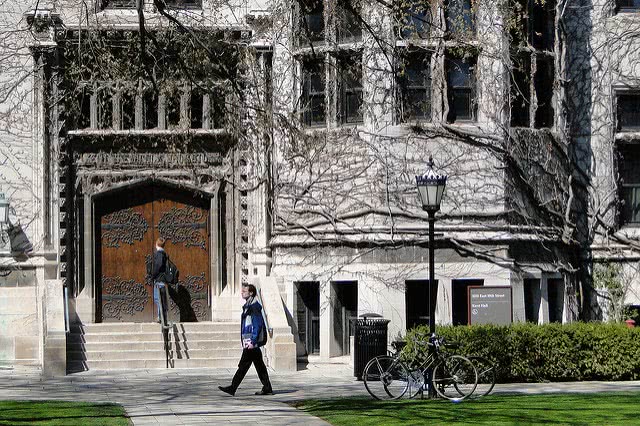College entrance exams have long been a key element of the application process. However, in recent years, more and more schools have decided to make the tests optional or not required at all. Additionally, many schools chose to go test-optional during the COVID-19 pandemic. Given the increased number of colleges becoming test-optional, it begs the question: how do test scores affect college rankings?
Test Scores and College Rankings
When College Raptor creates its Best Colleges Rankings every year, we look at a large number of data points such as retention rate, endowment per student, four-year graduation rate, test scores, and more. (Read about our full methodology here). We were curious how removing test scores from the equation would affect the overall rankings.
So we ran our Top 50 Best Colleges in the US list twice – once with and once without test scores. The results are very interesting.

Rankings Without Test Scores
Overall, 58% of the Top 50 schools only shift one to three spots when test scores are not a factor. That said, there are a number of notable jumps upward. Wesleyan University in particular hopped up 36 ranks. Juilliard gained 23 spots. Bowdoin and Soka University both increased too, at 23 and 17 points respectively.
That said, decreases were generally more subtle. Again, most only fell by a rank or two. The school with the largest rank decrease, falling only 12 spots, was Harvey Mudd College.
What The Different Ranks Tell Us
Though the rankings of many schools shifted around within the Top 50 – with 5 maintaining their original rank – it’s important to note that only two schools entered the Top 50 when test scores were removed: Wesleyan and Juilliard. Otherwise, the schools that were previously ranked in the Top 50 remained there. This was another reason why we felt comfortable keeping the scores within our rankings this year.
The top 3 schools did not change in either list. Their high scores in factors like retention rate and graduation rate are so robust that removing test scores didn’t alter their rank. It’s interesting to note that MIT has the #2 highest median ACT/SAT scores in the U.S., and even removing that factor still didn’t affect its rank. In fact, MIT is #7 in average faculty salary, #14 for 6-year graduation rate, #4 for first-year retention rate, and #6 for student-to-faculty ratio. Given MIT’s impressive scores in other areas, removing the median ACT/SAT scores from the equation doesn’t change their position in the Top 50 Best Colleges.
Other Factors At Play
Additionally, we took a closer look at the two schools that joined the Top 50 once test scores were removed from the equation. Juilliard has never reported their median test scores, likely due to the fact they are a music school. Wesleyan hasn’t reported test scores since 2013. That lack of data lowers their rank in our algorithm.
When we took test scores out of the equation, both schools rose up because they shine in other areas. For example, Juilliard has a high 6-year graduation rate of 94% and is ranked #29 in the country for that category. Wesleyan is #26 in the country for the first-year retention rate at an impressive 97%.
These shifting ranks show us that while test scores have historically made an impact on ranking spots, they are only one part of the larger equation. It reiterates that a college’s rank really depends on a multitude of factors.
Should You Pick a College Based on its Rank?
When a student chooses a college, it should be because of many elements, not just one or two. College rankings are a great starting point for students to explore potential schools, but we advise that students don’t apply solely because a school ranked high on a list and is a household name. A lot more goes into finding the right college for you, like location, majors, size, and net price.
College Raptor can help you discover colleges that are a great match for your needs and goals. Best of all, it’s completely free. With our tools, you can get personalized college matches, compare cost estimates, and discover scholarship opportunities.






